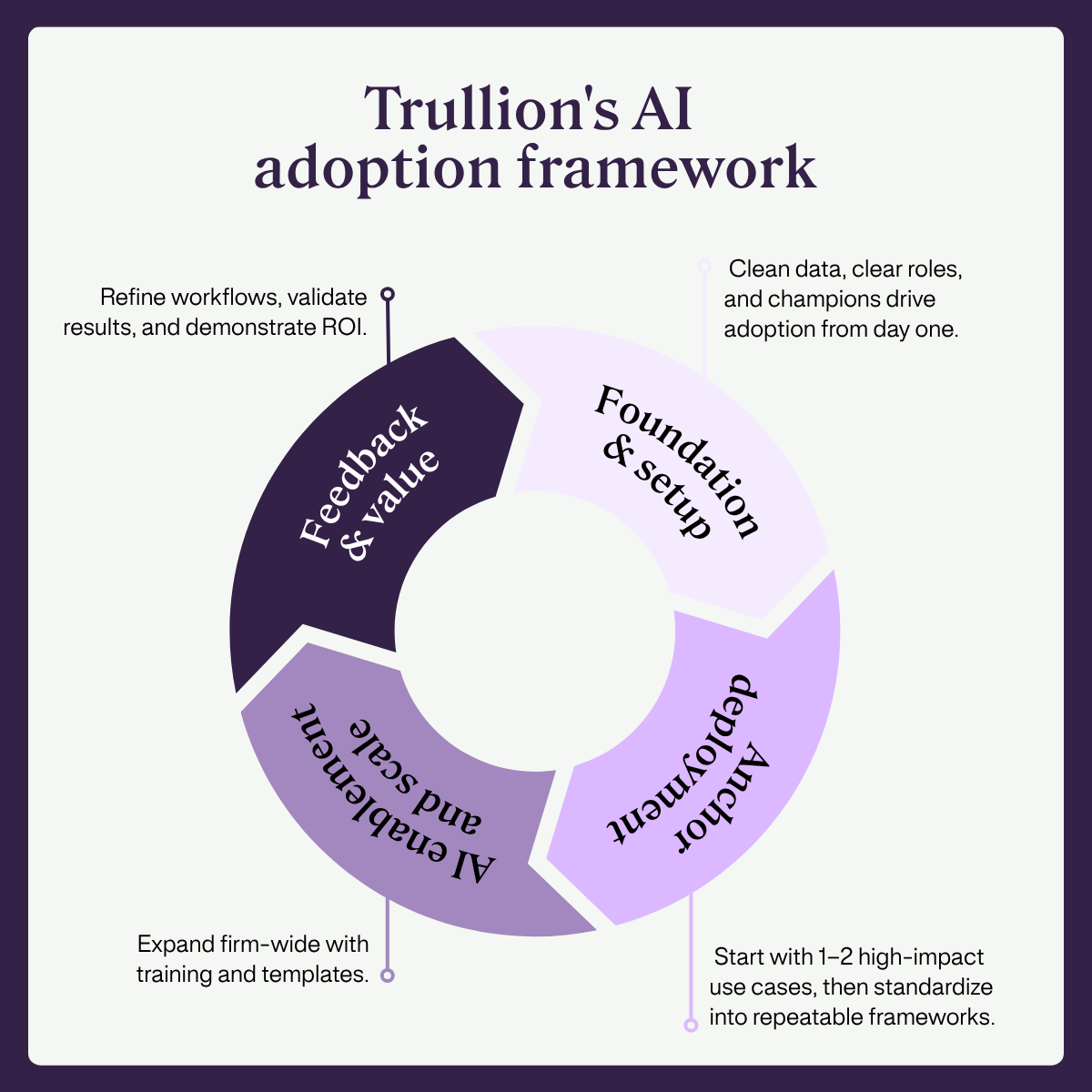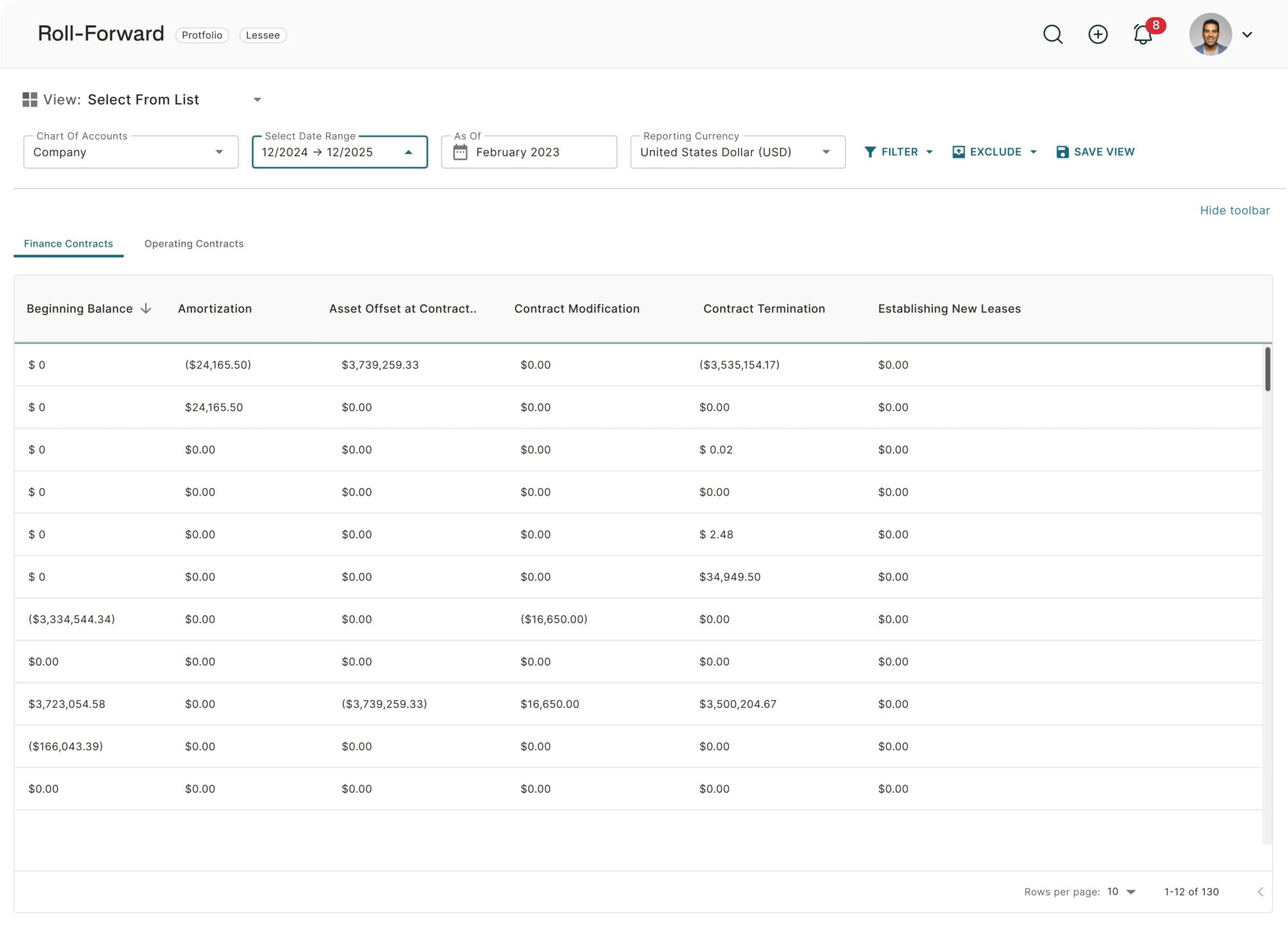AI is the operating system for the next generation of firms. In our last post, we highlighted that this shift changes how organizations buy, deploy, govern, and scale technology. Tools alone don’t move the needle. A smart adoption framework does.
Trullion serves 1,000+ customers with Big 4-grade SOC controls. In this post, we’re exploring our four-phase, services-as-software model we use to help audit firms adopt AI quickly, safely, and at scale.
Why AI adoption isn’t “SaaS onboarding”
Traditional SaaS is deterministic and linear: configure → train → go live. AI is probabilistic and iterative: use → observe → refine → scale. This difference shows up in four key ways:
- Data is fuel. Value scales with the quality and breadth of your inputs. Invest early in data blueprinting or your pilots will stall.
- Co-evolution, not configuration. AI usage shifts with changes to people, data, and workflows. Plans should always assume iteration.
- Continuous feedback by design. Accuracy improves via validation, prompts/templates, and governance. Align on acceptance targets and guardrails.
- Skill asymmetry. A few users accelerate quickly with AI adoption, while others need structured enablement to keep pace. Champion-led enablement is the fastest path to broad adoption.
These are Trullion’s core deployment principles for successful AI adoption:
- Explainable AI: All outputs include audit trails back to the source.
- Use-case first: Solutions are built for real work, tailored to your firm.
- Fast feedback cycles: We iterate rapidly, refining models based on your output validations.
That’s why we don’t “install a feature.” We co-create workflows, then evaluate and expand.
Our four AI adoption phases

1. Foundation and setup
What we do: Ensure clean data inputs, clear roles, and governance from day one.
- Workspaces and access: Set up workspace architecture, SSO/permissions, and a role matrix.
- Data blueprinting workshop: Map firm-level materials (methodology guides, policy memos) and engagement inputs (contracts, GL, TB). Pre-populate instances with your live client files so training and templates are built on reality, instead of samples.
- Identify champion users: Align on early adopters who will be liaisons with Trullion and support peer onboarding/training.
Why champions first? AI adoption shows skill asymmetry – a few users accelerate quickly while others lag. Champions shorten the learning curve by modeling best practices, building reusable templates, and coaching teams so everyone levels up faster.
2. Anchor deployment
What we do: Deliver quick wins with 1–2 high-impact use cases, then standardize the approach into a repeatable framework.
- Co-build starter use cases with champions for each audit group.
- Build engagement-specific templates (e.g., revenue testing logic, allowed document types).
- Validate outputs with reviewers. Fine-tune prompts and match rules.
Typical anchors include Financial Statement Review for math/consistency and prior-year/version checks, and Data Match (Test of Details) for structured-to-PDF matching in substantive tests, controls testing, three-way match, and reconciliations.
3. AI enablement and scale
What we do: Expand from champions to broad, repeatable adoption across offices and verticals.
- Phased training. For champion users, we train on deep dives by module (i.e. Financial Statement Validation, Data Match, Data Extract), live use cases, template building. For general users, we run pre-built workflows, role-based exercises, then expand to new use cases.
- Train-the-trainer. We then certify champions to lead team sessions and 1:1 coaching.
- Libraries. We publish a role-based prompt and template library, and add more use cases at scale.
4. Feedback and value
What we do: Close the loop – prove ROI, refine quality, and guide the roadmap.
- Monthly value reviews: usage, time savings, QA findings
- Output validation cycles: Sample QC, variance analysis, error taxonomy
- Roadmap co-planning: New templates, data sources, workflows
Ongoing and continuous support
After go-live, you’ll work with a dedicated CSM and have open access to knowledge resources and our help desk. We maintain a consistent cadence of check-ins and reviews to expand use cases.
Embedded reporting tracks metrics for adoption, time savings, and quality enhancements. Clear escalation paths and SLAs ensure production issues are resolved fast.
Putting the adoption framework into practice
A dedicated deployment approach turns AI from a promising tool into an operating capability, driving ROI across your firm. Start with real work, validate with reviewers, and scale through champions, templates, and feedback loops.
Want to see a phased AI rollout, tailored to your audit firm? Talk to our experts.





